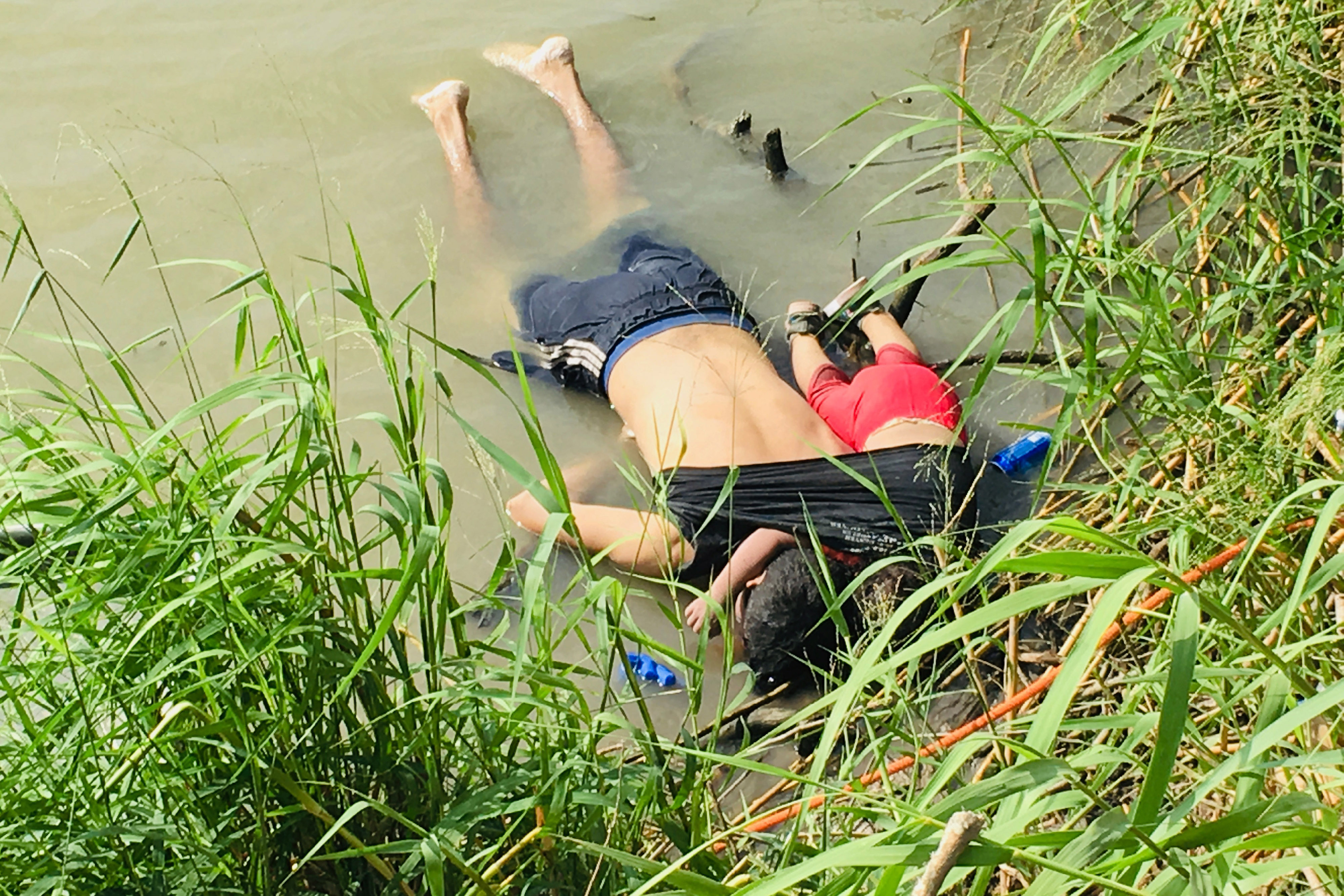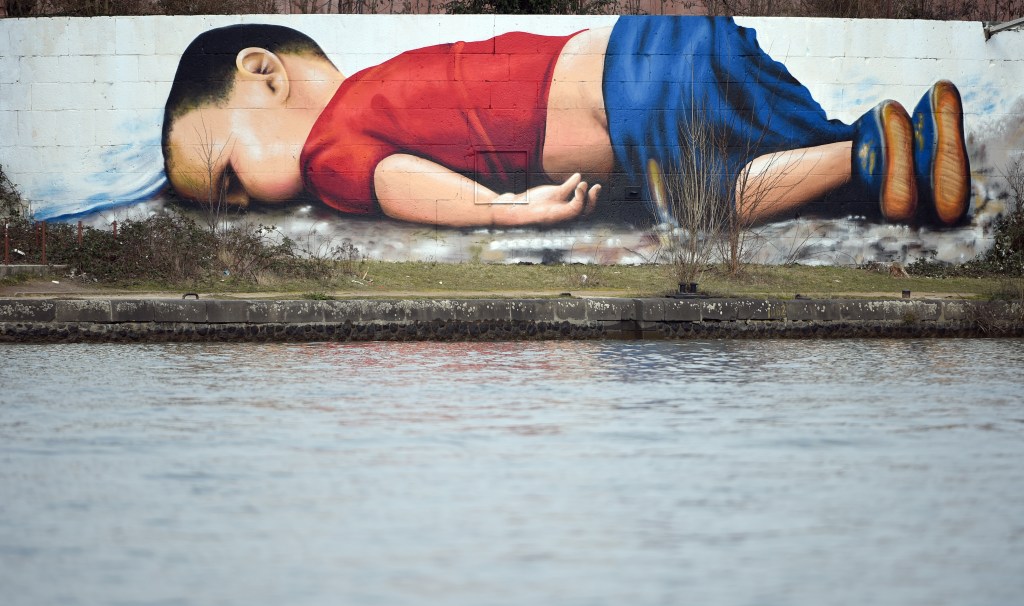LONDON — The harrowing photograph of the body of 23-month-old Angie Valeria, face down beside her father in the Rio Grande, has jolted the world’s conscience over the plight of migrants crossing into the United States.
But don’t count on that wave of sympathy translating into more humane policies on the U.S.’s southern border. For migrant activists in Europe, the photograph of the Salvadoran child and her father provokes a familiar horror — and a strong sense of déjà vu. Nearly four years ago, a similarly chilling image of another drowned child, a three-year-old Syrian boy named Alan Kurdi, provided a flashpoint in Europe’s migration debate.
Videos by VICE
The devastating image of the dead child, washed up on a Turkish beach like a piece of driftwood on Sept. 2, 2015, triggered a wave of material support and new recruits for charities working to help migrants, mass demonstrations in solidarity, and created a compassionate public mood which drove European leaders to accept greater numbers of refugees.
But nearly four years on, that mood has curdled. Across the continent, public attitudes to refugees have hardened, stoked by surging populist politicians, while groups that work to help migrants, once hailed as heroes, are increasingly vilified. European governments have taken a hardline, deterrent approach to border control, making the routes into Europe deadlier than ever, advocates say.

“It was such a heartbreaking photograph that it generated a powerful moment of compassion, and understanding of the scale of the tragedy that was happening at Europe’s borders,” Judith Sunderland, Human Rights Watch’s Europe division associate director, told VICE News. “But it was a short-lived moment, and it passed, and since then policies have gone in the opposite direction. There’s more support for harsh border controls and deterrence that arguably make these crossings all the more dangerous.”
The tragedy of Alan’s death, along with his mother Rehana and older brother Galip, after their boat took on water and capsized in the Mediterranean, once looked likely to push Europe towards a more humanitarian response to the migration crisis unfolding on its doorstep. Until then, the defining images of the crisis had been more ambiguous: largely of crowded boats, laden with as many as 100 mostly adult passengers. The unequivocally tragic photograph of a dead child, carried on newspaper front pages and reportedly seen by 20 million people on social media within a 12 hour period, gave the crisis a powerful emotional resonance, and helped to crystallize a newly sympathetic public mood.
“People saw that image and were really shocked to the core, it became quite personal,” said Daniela Reale, Save the Children UK’s children on the move expert. “People thought it was completely unacceptable and demanded policy-makers do something about it.”
Donations and offers of support started flooding in for groups working to help migrants reach safety in Europe, and provide assistance for them once they arrived. “It was the start of a huge solidarity movement,” said Dariush Beigui, a German boat captain who volunteers on rescue missions to save migrants in the Mediterranean. He said at least one of his crewmates had been motivated into the work as a result of seeing the photograph, which he compared to Nick Ut’s famous 1972 photograph of a nine-year-old Vietnamese napalm victim. In London, an estimated 100,000 people marched in the largest display of refugee solidarity the country had seen.
“People saw that image and were really shocked to the core, it became quite personal”
In line with the newly sympathetic public mood, a number of European leaders made critical decisions in support of the migrants’ cause. In Germany, Chancellor Angela Merkel, who had already loosened the country’s borders, adopted a welcoming “open doors” policy that would lead to the acceptance of about a million refugees that year. In Britain, then-Prime Minister David Cameron announced he was raising his country’s intake of Syrian refugees from a few hundred to 20,000 over five years.
But, critically, European governments failed to deliver on a coordinated humanitarian solution that would have seen migrants relocated from the major arrival points in Greece and Italy and distributed evenly throughout EU countries. A number of countries, notably Hungary, Poland, Slovakia and Czech Republic, refused to cooperate with the resettlement scheme, while most other EU countries fell significantly short of accepting the numbers of refugees they were assigned.
Sunderland said the failure of that response fueled a growing sense of grievance and anxiety over the new arrivals — particularly in countries where people perceived they were shouldering more than their share of the burden — that was fueled by rising national populist movements like Germany’s AfD and Italy’s Lega.
“European leaders so grossly mismanaged the surge in arrivals that it became incredibly chaotic and frightening for a lot of people around the bloc,” she said.
That sense of grievance and anxiety over the new arrivals — particularly in countries like Germany and Italy where people perceived they were shouldering more than their share of the burden — has been stoked by xenophobic populist movements. Sunderland said the populists had played a major role in shifting public opinion in Europe against refugees, “grabbing control of the narrative and saying ‘this is an invasion, we can’t handle it’.”
“It’s much easier to push a negative message than it is to push one of hope and compassion and empathy,” she said.
The populists’ success in stoking anxieties around immigration have given them greater power across the EU, and further pushed governments towards a hardline approach intended to deter migrants from entering the bloc. In Germany, Merkel abandoned her “open door” policy last year to save her government; in Italy, the far-right, anti-immigrant Lega has declared the country’s borders closed to arrivals across the Mediterranean, and banned NGO-operated rescue ships from Italian ports, accusing them of being in league with human trafficking networks.
While this hardline approach has led to a sharp drop in the numbers attempting the crossing from Libya to Italy, figures from the International Organization for Migration show the route has become deadlier for those who attempt it, with roughly one in seven crossings proving fatal so far this year, compared with about one in 27 last year.
“It’s much easier to push a negative message than it is to push one of hope and compassion and empathy”
Beigui, the German migrant rescue boat volunteer, is facing a criminal investigation along with nine of his colleagues for allegedly assisting illegal immigration. He told VICE News he had seen a dramatic shift in how the public viewed their migrant rescue work, as attitudes towards refugees had hardened in recent years. “In the beginning, people saw us as heroes,” he said. “Last summer they started saying: ‘Maybe they’re criminals, and if they weren’t there people wouldn’t go out on the water’.”
European migrant advocates say this disappointing coda to the “Alan Kurdi moment” makes them dubious of whether the current mood of outrage over the latest searing photo from the U.S.-Mexico border will translate into a more humane government response to migrants.
“I hope I’m wrong, but certainly the past four years don’t give me any cause for optimism,” said Steve Valdez-Symonds, refugee and migrant program director at Amnesty International UK. “In many ways we’re in a worse state now than we were before Alan Kurdi’s death. Governments have never fought so hard to obstruct and criminalize life-saving acts towards migrants.”
Sunderland said she hoped that concern over the death of Angie Valeria could be sustained to a level it could influence U.S. border policies — and saw some grounds for optimism in that opposition to cruel government border policies seemed stronger and better organized in the U.S. than it was in Italy, where she is based.
“But ultimately, that’s not how it played out in Europe,” she said. “That moment of sympathy was a blip. The lesson from Europe is we can’t take that moment of compassion for granted — we have to sustain it over time in order to affect policy.”
Cover: The photo of the dead Syrian boy Aylan Kurdi served as a template for a graffiti that artists Justus Becker and Oguz Sen sprayed at the harbour in Frankfurt (Main), Germany, 9 March 2016. ‘Europe dead – Death and the money’ is the title of the critical project near the European Central Bank. (Photo by: Arne Dedert/picture-alliance/dpa/AP Images)




